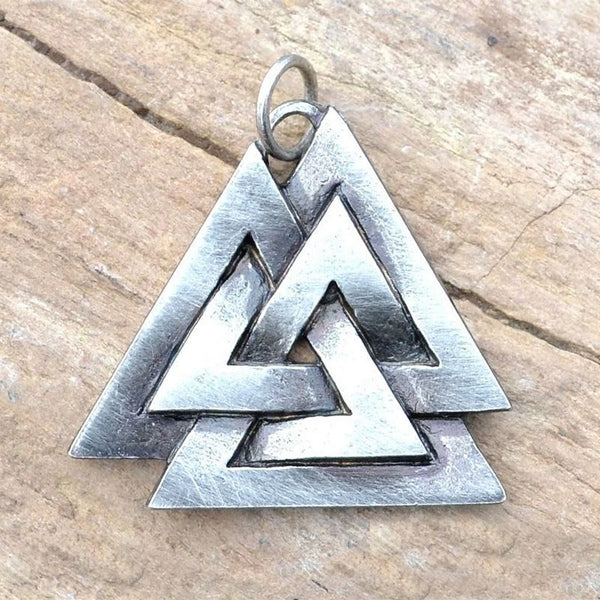

Fafnir originally had the Helm of Awe and credits his success to it. The Helm of Awe appears in the Poetic Edda(Fafnismal section) and Prose Edda (Gylfaginning section) in the tale of the hero Sigurd's battle with the dragon Fafnir. It may have been carved on helmets or weaponry. The name is usually translated as "frightening helmet" (Simek, 2). Whoever looked upon the Aegishjalmur was frozen with terror and could be easily defeated. The Aegishjalmur (Helm of Awe) is also known as Aegir's Helmet and is a symbol of protection and power in the form of a circle with eight tridents emanating from its center. In Norse religion, the wheel/disc/swastika became increasingly associated with Thor and was worn as an amulet and carved on tombstones as both a symbol of continuity and luck. The image of the wheel, a disc, or the sun-wheel – closely associated with the swastika – symbolized the sky and its relation to the earth, the earth itself (which was thought of as a disc resting on water), or the cosmos. A blacksmith, for example, would have a swastika carved on his hammer to not only sanctify it for his work but to make the object lucky.

In Norse religion, it was associated with the sky-god Thor and was often carved on objects to imbue them with sanctity or simply luck. The swastika symbol is unfortunately associated primarily with the Nazi Party of Germany in the mid-20th century but is actually an ancient symbol of power, holiness, prosperity, continuity, luck, and fire (the life force) which appears in the iconography of many different cultures and religions around the world. In Norse religion, the disc/swastika became increasingly associated with Thor & was worn as an amulet & carved on tombstones as both a symbol of continuity & luck. The name of the symbol is usually translated as "knots of those fallen in battle" signifying warriors gathered by Odin's Valkyries from the battlefield and brought to Valhalla. Among Odin's many supernatural attributes is his role as psychopomp, a figure who guides the souls of the dead to the afterlife. The Valknut (Odin's Knot) is a symbol of the transition between life and death and, according to Davidson, "is thought to symbolize the power of the god to bind and unbind" ( Gods and Myths, 147). In the final battle of Ragnarok, the twilight of the gods and end of the world, Yggdrasil will be destroyed along with everything else but will be reborn afterwards in a new world. The dragon, eagle, and squirrel are all symbols of change as not even Yggdrasil will last forever. The death-dragon Nidhoggr gnaws at the tree's roots while the eagle of discord nests in its upper branches and a squirrel named Ratatoskr runs up the trunk and back down delivering messages between the two. In whatever context they appear, it is clear they were considered important evocations of powerful supernatural elements.Īlthough there remains much debate on the issue, it is generally agreed that Yggdrasil was an ash tree and that its name means "Odin's Horse" as in the tree to which the highest god's horse is bound but could also mean "tree of terror" as it is the tree on which Odin hung when he sacrificed himself to himself in his quest for wisdom (Simek, 375). These symbols sometimes are found in the form of amulets (such as Thor's hammer), sometimes in depictions of the afterlife (as with the ship) and often in images concerning the journey of life (the swastika/sun-wheel and ship). Generally, however, ten symbols were the most popular these appear most often in stories, images, and as amulets: There were many powerful symbols from the Norse- Viking period ranging from the wolf (for protection), to the horse (protection in travel), the troll cross (an amulet that protected one from trolls), the image of the Vegvisir ('way guide', a late Icelandic symbol which helped one find one's way) and the Web of Wyrd (web of fate), as well as the runes which were thought to evoke mystical powers.


 0 kommentar(er)
0 kommentar(er)
